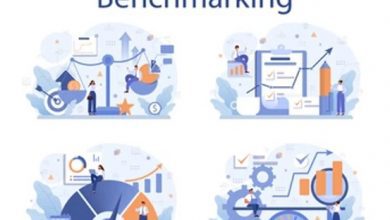Antifragile definition purpose Book resilience performance
The definition of Antifragile consists of a characteristic by which adversities are not overcome by reaction, but by acceptance .
In this case, accepting does not mean remaining resigned to a problem, but understanding the context around an unforeseen event and learning from it.
It would be more or less what is done in boxing, when a boxer assimilates the opponent’s blow, taking it as a reference.
Once struck, if he can withstand it and is cold-blooded enough, he can take advantage of this to “read” the opponent’s actions and thus avoid another blow.
By analogy, the concept of antifragile can be understood as something like this.
Realize that it’s not about pushing or opposing when something happens that goes against our will.
Before reacting, the antifragile first seeks to understand what has happened and accept their condition so that, from there, they can learn from their mistakes and evolve.
From another perspective, it is different from being reactive, as this is a behavior that is normally less thought of.
Being antifragile, therefore, means putting yourself in a proactive and conscious position .
It’s accepting that life, work and business always present new and unexpected facts.
Although, as we have already highlighted, the concept is not opposed to the need to plan, it is about placing the human being as an active and autonomous element to make decisions.
Therefore, he rejects anarchy, because to be antifragile is to be in a permanent learning process .
Where Did The Antifragile Concept Come From?
The antifragile concept is authored by the Lebanese-American professor of risk at the Polytechnic Institute of New York University , Nassim Nicholas Taleb .
The professor also stands out for being a major investor in the financial market, which, as is known, is one of the most volatile and uncertain business environments that exist.
He gained great prominence in the first decade of the 2000s, when he released forecasts about the crisis that would lead to the bankruptcy of Lehman Brothers, in the so -called Subprime Crisis , in the United States.
Taleb is also recognized for his advanced studies in probability and risk analysis , which he puts into practice in the financial market.
He is an investor who grew up and prospered in the midst of the apparent chaos of this market, which is nonetheless a kind of field for experimenting with his theories.
In this context, the antifragile concept was born, whose precursors were the books “ Iludido Pelo Acaso: A Influence Occulta da Sorte nos Mercados e na Vida ”, from 2004 and “ A Lógica do Cisne Negro ”, from 2007.
A parenthesis on the latter is worth mentioning, in which Taleb lays the foundations that would later establish the theory of antifragility itself.
In it, the author exposes the great opportunities and, of course, risks that unpredictable events of great magnitude can generate.
If you are interested in investments, risk analysis and the financial market, be sure to read the works of this great contemporary exponent.
The Antifragile Book
In “ The Logic of the Black Swan ”, Taleb points to the constancy and frequency of unexpected events in the world .
He talks about the imponderable as a central element in several events, both on a personal and collective level.
Occurrences of this type are called by the professor Black Swan and have, in general, three characteristics :
- are unpredictable
- Produce impactful results
- After their occurrence, ways are sought to predict and explain them.
Incidentally, the term Black Swan, although it refers to chance, is not at all random.
He mentions the sudden appearance of this very rare bird in Australia, in the middle of the 17th century, a fact that generated commotion because it was, until then, inexplicable.
From the work, the antifragile concept takes shape, which would culminate in the bestseller “ Antifragile: Things that Benefit from Chaos ”.
As the name already reveals, chaos and the unwanted can be positive , as long as they are put to good use.
In a way, it is a continuation of the ideas launched in the original work.
In the book, antifragility is presented as the opposite of fragility.
Therefore, for the author, being strong or resilient does not represent the opposite idea of being fragile.
The main difference, according to guru Taleb, is that the antifragile not only resists changes, but also learns from them, improving their skills and abilities .
Remember the boxing analogy?
We can add that it is as if, in the midst of a fight, the battered boxer is capable of learning something that he has not even trained.
What Is The Antifragile Concept For?
Who could have foreseen an event like 9/11 or the already highlighted Subprime Crisis?
Once consummated, they provoke uncontrollable developments that, in turn, can represent good opportunities to learn and grow .
The attack on the twin towers in 2001, for example, caused a drastic drop in the price of a barrel of oil , sending investors into severe difficulties.
On the other hand, it is a fact that those who invested at the right time were able to obtain expressive profits, in view of the great oscillation in this commodity.
Those who knew how to absorb the impact of this event certainly found it a great chance to do business.
Of course, this does not mean disrespecting the thousands of victims of the tragic incident, quite the opposite.
The point here is to understand that certain things, after they happen, cause changes so profound that there is no remedy other than to adjust quickly .
Since we’re talking about it, the Subprime Crisis is also a good case to study.
Take the case of the investor who multiplied his equity by more than six times as he explored the effects of this unprecedented economic crisis.
Realize that, ethically, it is not wrong to use a crisis or even an accident as a springboard in terms of business.
In fact, those who enjoy these moments are also taking risks.
It is this willingness to risk that Professor Taleb highlights as a virtue of the antifragile .
This is a theme that even guided his most recent work, “ Risking your own skin: Hidden asymmetries in everyday life ”, from 2018.
So, to summarize, the antifragile concept serves as the basis for learning to deal with risk.
It is not a method, but a set of principles that help to face the undesirable not as a problem, but as an opportunity.
Difference Between Resilience And Antifragile
Considering that crises and fortuitous events represent chances of growth , it is worth questioning the value of some personality and leadership attributes .
In this case, the antifragile concept discussed in the book serves to cast doubt on the importance of resilience.
It is characterized by the capacity that an individual has to suffer a shock, whatever it may be, and remain faithful to his goals .
In other words: it is the same as resisting an impact and not being altered.
As you can see, the line that separates resilience from stubbornness is very thin.
In this aspect, being antifragile is an evolution, because it allows not only to assimilate impacts but also to learn and learn from them.
It’s as if you were hit by a very strong wind and, on the basis of the force, you managed to stand up.
Being antifragile, you would not only be able to pass through the wind, but also learn where the wind comes from, what factors lead you to increase speed and even avoid gales.
Who Is Nassim Nicholas Taleb?
In addition to being an investor and teacher, Nassim Nicholas Taleb carries out a series of activities and adds heterogeneous skills to his curriculum.
On his unofficial website , articles on a wide range of topics can be found, ranging from human stupidity to interviews with the guru about politics in his homeland.
In fact, the author’s curriculum reveals a lot about his multidisciplinary and holistic/generalist profile.
He is, according to Wikipedia, “fluent in English, French and Classical Arabic. In conversation, he is fluent in Italian and Spanish and reads classical texts in Greek, Latin and Aramaic.”
In addition, he is president of the investment company Empirica and works as a consultant for the Universia group, linked to Banco Santander.
A man of many skills and a solid academic background, as you can see.
However, Professor Taleb even gained notoriety when dealing with topics that were very difficult to research and establish judgments: chaos, uncertainty and unpredictable events.
These are the backgrounds of his most celebrated works, especially the one dealing with the antifragile concept.
Perhaps his greatest contribution is to tell people that error, doubt and the imponderable are factors that are always present in life, so there is no reason to always want to avoid them.
Of course, the more predictability and security, the better.
However, excessive comfort can be as dangerous as the unpredictable, as it generates accommodation and hides dangers.
Youtube Lecture
Given the guru’s enormous prominence, it’s no wonder that his lectures and classes are highly sought after all over the world .
Whether in TED Talks cycles or corporate events, Nassim Nicholas Taleb presents his ideas with great ease.
In one of these events , he exposes some of the principles and insights that led him to create the antifragile concept.
Early on, he talks about the impossibility of predicting potentially harmful events in complex contexts.
To illustrate, he makes a parallel with a car crash, in which the greater the speed of the collision, the greater the damage caused.
He also makes an interesting comparison with the Darwinist theory , used as an example to define the systems of which companies are part.
In this case, each company is a fragile component, while the system as a whole is antifragile.
It’s worth following this real class on the concept and, why not say, on ways of conducting life and business.
How To Apply This Concept In Professional Life?
Certainly, the antifragile concept would not be so discussed, disseminated and well accepted if it were not applicable in practice or, at least, if it did not induce valid reflections.
In this aspect, antifragility is the most appropriate response to deal with situations that are beyond comprehension or are too complex to understand.
It is a new behavioral and strategic parameter, since its premise is: do not reject the unforeseen, but embrace it when it appears.
What is the routine of a company , even the big ones, if not a succession of unforeseen events and events that are out of control?
Therefore, being antifragile means accepting reality as it presents itself and not as we would like it to be.
By adopting this stance, seemingly impossible challenges take on a whole new and, in many cases, exhilarating dimension .
Imagine, in this case, that you started a business out of necessity, that is, to ensure your livelihood.
Starting a business this way, no matter how risky, can be a big step towards gaining independence, especially financially.
It is possible, as long as one maintains an anti-fragile posture and is open to learning.
Another case in which the concept can be applied is that of family businesses that have difficulties in becoming professional .
Companies of this type, in general, grow on the basis of talent and effort, leaving the management part to develop later.
Thus, they end up accumulating problems for which, naturally, they were not prepared.
By adopting the concept of antifragility, the unforeseen of the lack of management can serve as valuable sources of learning, thus helping in the growth.
Antifragile Concept Applied To The Performance Of Companies
Being antifragile, as can be seen, requires some degree of autonomy and decision-making power .
Therefore, it is a concept that has been spreading rapidly among leaders of different segments and in companies of all sizes.
It is a theory that provides answers in unforeseen everyday situations, serving as a basis for making decisions that are not always easy.
Therefore, some guidelines can be given, considering the routine of leaders who are constantly urged to decide on people and processes.
- Try to receive and give constant feedback to people, always directly, avoiding manipulating
- Try to act even if you fear mistakes in low-risk situations, as they serve as a learning experience.
- Never feel too confident or comfortable when things are going well. After all, that’s when the hidden threats set in.
- On the other hand, don’t be intimidated by these threats, always remembering the second recommendation on this list.
- Try to assimilate new knowledge about challenges you are going through to know what to do, drawing on the experience of others
- Never leave problems to solve later. Always have them as a source of learning that you will take into your future, in life and in your career.




